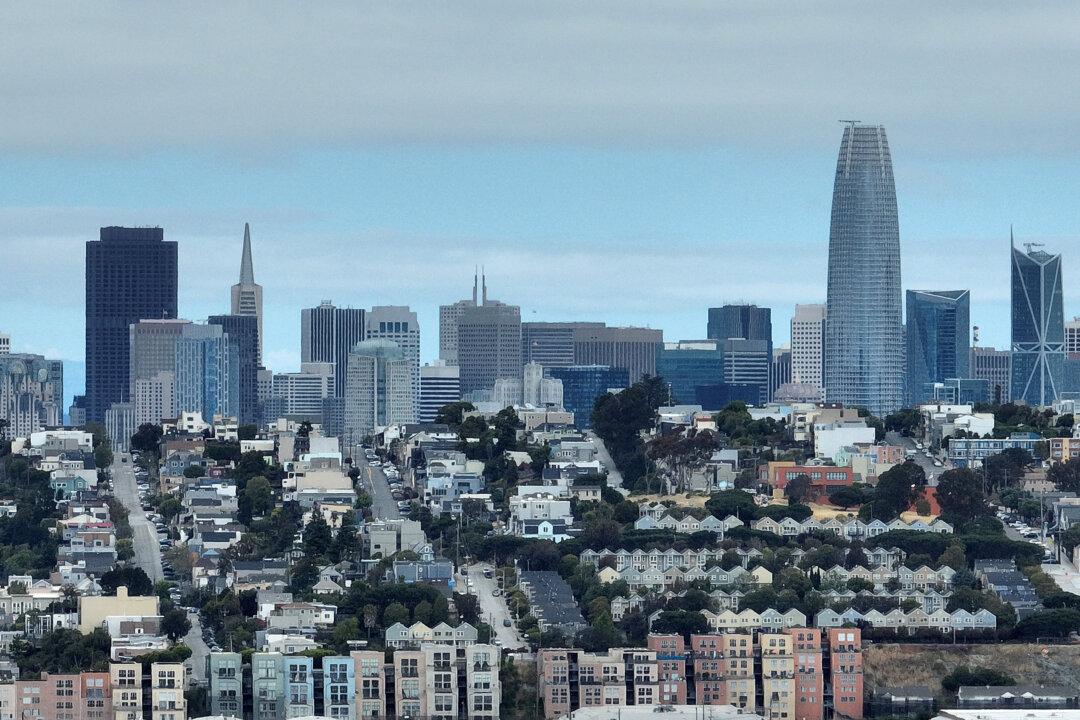On March 3, San Francisco Mayor London Breed announced the “Welcome Back to SF pledge”—a commitment by large private employers to return their workforce to offices in several areas of the city by the end of March.
When we first heard about this, we thought, “Terrific!” and pored over the press coverage for the other half of the story: What has Mayor Breed committed the City of San Francisco to do? What policies will City Hall change to rejuvenate our business districts?
We searched in vain. Breed offered no ambitious proposal, no carrot, no stick, and no follow-through. It’s easy for any large employer to say that “some” of their workers will return in person to “some” offices, under “hybrid” and “flexible” workplace policies, by the end of March.
Here is the reality. San Francisco’s office neighborhoods are the most vacant, inactive and shuttered of any major city in the country today. This is a serious problem that the mayor can’t address with speeches and handshakes.
We have the highest major urban commercial vacancy rate, which continues to rise monthly as long-term leases and subleases expire, according to Jones Lang LaSalle (JLL) Research. A recent survey of entry card swipes by Kastle Systems ranked San Francisco as the major urban center with the lowest share of workers showing up daily, less than 25 percent of pre-pandemic levels.
And yet, oddly enough, San Francisco is already “back to work,” just not in the usual fashion or in the usual office places. According to the California Employment Development Department, local unemployment, which had been about 2 percent pre-pandemic and hit a pandemic high of 13 percent, by the end of 2021 dropped to less than 3 percent.
Total employed residents, which had been about 570,000 pre-pandemic and declined to a pandemic low of about 480,000, by the end of 2021 rose to over 550,000. The situation has become, therefore, more lopsided than it might first appear. At a time that San Francisco ranks worst for worker returns to the urban office, employment has nearly recovered.
A recurring theme in the mainstream media is that the pandemic has changed the cultural connection between office work and employment, and there is something to it.
Pre-COVID, business in San Francisco meant high-density, urban office work. Northern California companies attracted and congregated the best and brightest from around the world and encouraged face-to-face interaction and collaboration.
The pandemic brought a dramatic shift that was more than cultural. The Bay Area economy turned upside down at least twice. Corporate practices changed. So did our professional lives. Many lost or switched jobs or homes. How we balance work and family, including childcare and education, is different today. What employers ask of us, and what we demand of employers, has evolved—what’s up for negotiation is a whole new ballgame.
Employers and employees have leapt across a canyon to new ways of doing business in which working from home is a norm.
Half of the pre-pandemic workforce in major tax-generating sectors has stopped commuting into San Francisco or no longer lives here. As a result, the city is losing significant revenue from the gross receipts (business) tax, which depends on the number of a company’s employees that work or live inside city limits. State and federal bailouts are set to expire this year.
The City Controller’s Office casually predicts a 75 percent return to offices by next year, and 85 percent by 2026. And yet the mayor has put forward nothing meaningful to encourage the return of the urban workforce other than proclamations.
It’s a big leap back. Employers and employees need dramatic incentives.
We believe that Breed wants what is best for San Francisco. If she’s serious, now is the time for her to exercise the full authority of the Office of the Mayor and to put her administration and personal reputation on the line to restart the San Francisco office economy.
Here are a few tips:
Clean up our office streets downtown and end the scourge of broken glass, trash, and human waste on our sidewalks. Move the homeless into shelters and care. Fully staff the police force, and increase the visible police presence downtown. Intervene with the Chief of Police and the District Attorney and insist that those departments function as they should, so that we reorient our criminal justice effort to deter crime, prosecute violent offenders, and ensure public safety. Upgrade and secure our transit stations, garages, and street parking for commuters.
On the economic front, encourage the Board of Supervisors to see the benefits of reducing gross receipts tax rates and cutting or suspending taxes and surcharges that impede the commercial office market—which should be rapidly rebounding. Streamline the red tape that hamstrings business activity in San Francisco. Stop the cycle of endless business tax increases, and commit the city to a long-term, friendly climate for urban job creation.
Break the logjam on constructing residential housing that is convenient to urban offices, with a more balanced approach toward affordable housing. Acknowledge that San Francisco’s urban office neighborhoods will change in scale and that some commercial properties should be rezoned and repurposed.
Make a concerted effort to attract and revitalize our tourism industry.
Finally, remember that it is the duty of the Office of the Mayor to represent all of San Francisco’s residents and to be constantly vigilant against divisive and self-serving agendas that may be put forward by members of the Board of Supervisors, lobbyists, and special interests.
The reins of leadership of this once magnificent city must change and adapt with the times as San Francisco struggles to recapture its preeminence in the business world.
We would all love to see the theme of Mayor Breed’s press conference come true. Words, however, can sometimes be hard to put into action. Picking a date is not a policy.






